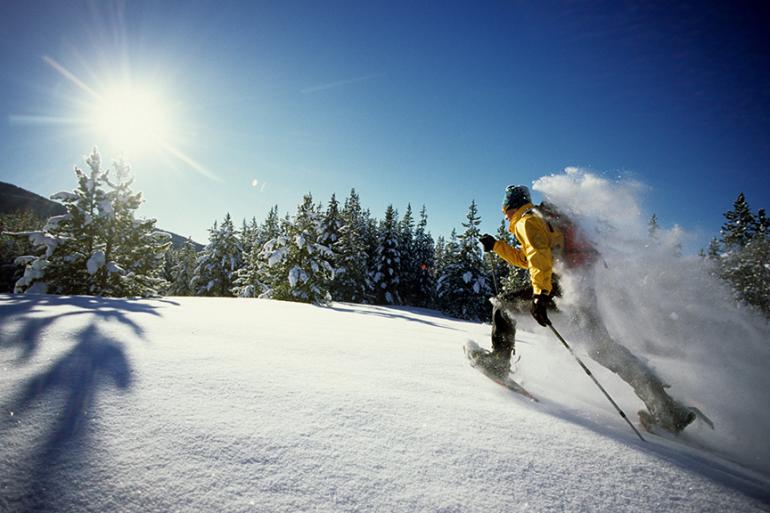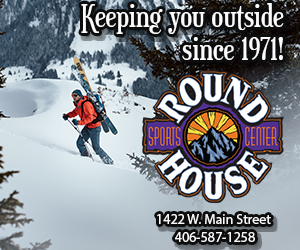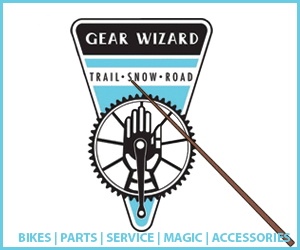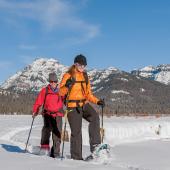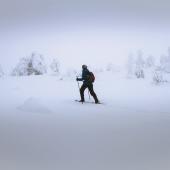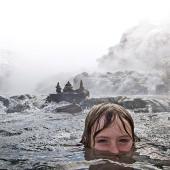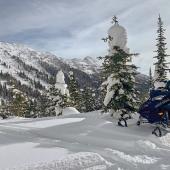Snow's the Limit
The wide, wide world of snowshoeing.
“Let’s go over that way,” I say to the dog, pointing to a slight gap in the trees that seems to run for ten or 20 yards. On this hillside thick with lodgepole, it’s the only direction that’s both relatively flat and wide enough for me to shimmy through.
The dog bounds off through the snow in the appropriate direction, as if she’s reading my mind. Or perhaps she’s happy that finally I can read her mind. After so many years of sticking to the boring trails, I’m finally seeing the forest as she does—not as a predefined progression to some distant goal on a map, but as a meander, an exploration, a discovery.
Two things brought about this transformation. First I bought snowshoes. Then, after five years, I figured out how to use them.
I bought snowshoes because I thought they were for walking in deep snow. Compared to the enormous wooden ones that I had as a child in the 1970s, today’s snowshoes are not only tough and lightweight, they’re also tiny. You don’t need a bow-legged gait, and it’s something you can do without learning any complicated techniques.
So early on, I walked trails in snowshoes. I exercised my legs while admiring the beauty of the snow, smelling the fresh air, hearing the awesome stillness between each footfall-crunch. It sure beat a treadmill in front of cable news. It was rewarding.
But somehow the snowshoes soon ended up languishing in the garage. I realized the reward I’d felt was only relative to a treadmill. I was finding greater reward in cross-country or telemark skiing, feeling the grace and the speed. I kept thinking I should learn how to ice skate, to gain the competitive and team rewards of hockey. Meanwhile, I found myself rationalizing: if I was just going to walk, why not walk the plowed streets of town, where I didn’t need any equipment at all?
Finally I remembered the words of my friend Mike, when he sold me the snowshoes. “With these things you can go anywhere,” he said. “You’re not limited to a trail.”
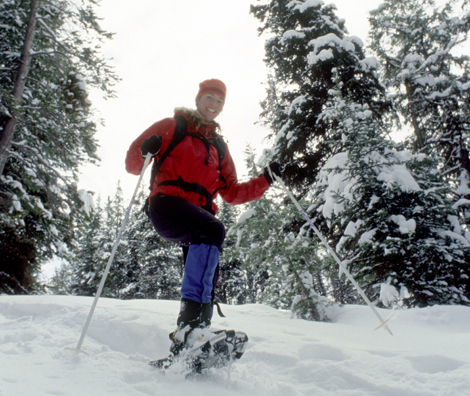
So one day I drove to a popular trailhead and took off in a different direction. Instead of following the creek along the well-trodden path to the left, I turned right. Soon I found myself ascending an unfamiliar ridgeline that divided the creek from another place familiar to me, a summer camp. “So that’s how this landscape fits together!” I thought. I’d walked trails around the camp and the trail along the river, but never held the two in the same view. I paused to admire them—and struck out for more.
Could I find the spot where we took those pictures? Could I approach it from the other side? Could I even move behind it, through an area that in the summertime was too swampy to navigate?
Suddenly I understood the freedom implied in Mike’s words. I was free of the trail. Snow blanketed (and protected) shrubs, twigs, and grasses—which meant that the differences between “trail” and “not-trail” seemed tiny. Furthermore, because my snowshoes left easily discernible tracks to retrace, I worried less about getting lost.
I could go anywhere. And thus snowshoeing transformed the landscape from a two-dimensional trail-centric view to a three-dimensional world of infinite paths. At that moment I came to see snowshoeing as a unique and wonderful sport.
To me, the primary benefit of any outdoor sport has always been the way it enhances your interaction with the landscape. You see landscapes differently from the saddle of a horse, bicycle, or motorcycle, or on foot, than you do driving. As a hunter, you see it from the perspective of predator and prey. Downhill skiers suddenly appreciate fall lines; kayakers see standing waves. A cliff face means something different to a rock climber than it does to a hang-glider—and each of their views is far more sophisticated than mine.
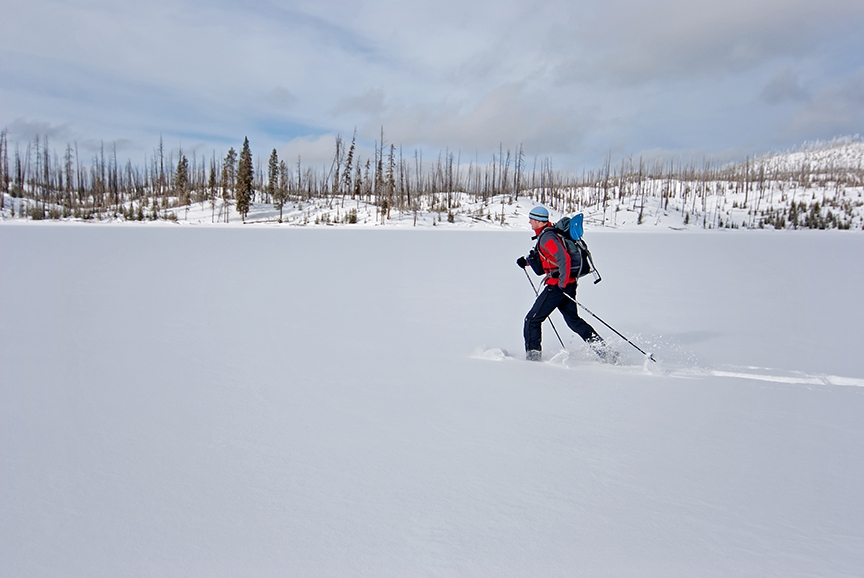
I’d expected snowshoeing to demonstrate its sportiness through some sort of degree of difficulty: deep snow, hard workout, top-flight equipment, and pleasure at my increased control over hazardous natural conditions. In my ignorance I thought I would master snowshoeing the way I’d progressed from the bunny slopes to the black-diamond runs at the ski resort. But what I found was a change in philosophy—the way I looked at the winter landscape. I also found that old habits die hard.
I continued to start my romps at trailheads. Although I’d learned that I could go anywhere, somehow my car didn’t yet realize it could park anywhere. Nor my feet: I would forget to go in the “wrong” direction, find myself on or paralleling the route I knew best.
But gradually the new perspective sunk in, and riches laid themselves out before me. On old terrain, new views. Behind familiar ridges, new nooks. On old snow, new prints made by deer or moose—the only other creatures to have come this way since the last storm.
I now allowed myself to follow those tracks, instead of human ones. I was thinking like an animal. Hell, I was thinking: not merely plodding along a trail but engaged with the landscape as I debated where I wanted to go and how I might get there. This was what the dog saw on every hike. This was why she continually bounded off trail—because she could.
Up hillsides and into glades: the world was so much bigger than I had realized. I’d been hiking these trails for 20 years, and in some cases I was even starting to get a tiny bit sick of them. Now, I discovered nearby abandoned logging roads, foresters’ fuel-reduction slash piles, impenetrable deep canyons cast in daylong shadows—all within a few hundred yards of those landscapes I thought I knew.
This new sport felt to me like exploring. I felt camaraderie with 16th century seafarers Columbus and de Gama and Vespucci, the heroes of my youth. At first following familiar routes, they’d veered off toward an unfamiliar horizon—the wonder of discovery must have been profound. I know it is for me, whenever I put on snowshoes and discover vast new worlds in lands I thought I had already long inhabited.
John Clayton’s latest book is a collection of historical essays, Stories from Montana’s Enduring Frontier. For more information, visit johnclaytonbooks.com.


